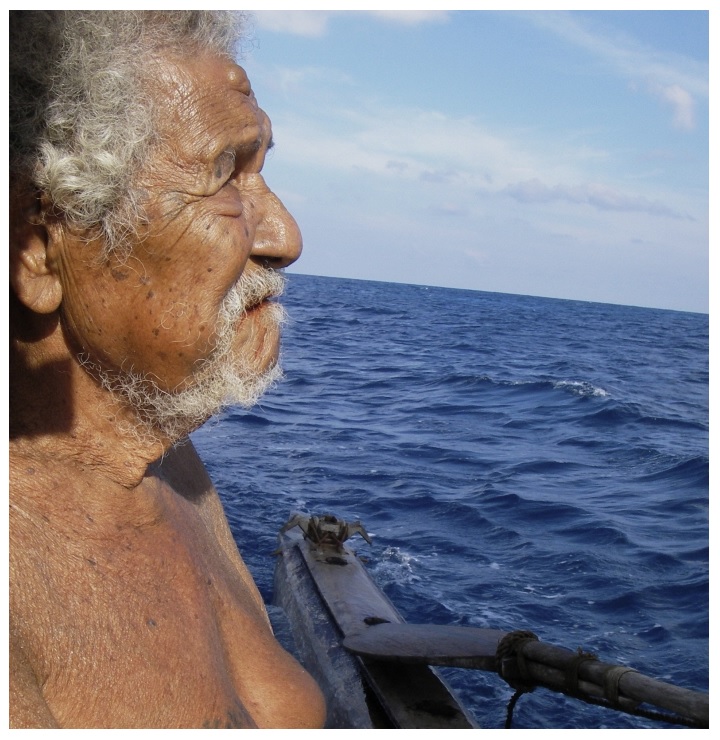The Canoe Is the People
Indigenous Navigation in the Pacific
Satawal Ways
The life of the winds
Chief Kaveia of Taumako made voyages between islands from the ages of about 7 to 97. He started as a “bailout boy.” When he understood how to sail, and became strong enough, he began to hold the steering blade, and study wayfinding. After many years and many voyages he became a wayfinder and voyaging leader. Kaveia knew many different natural phenomena and signs that are useful for wayfinding, and the relationships between these signs…such as the positions that wind comes from, and how it shifts to other positions during different seasons, the patterns that waves form when they move around, or between, islands, and the weather that happens when certain stars rise or set.
The Life of the Winds: Te Nohoanga Te Matangi
Kaveia found the way using a mental tool that came down to him from his voyaging ancestor, Lata. This ancient mental tool is called Te Nohoanga Te Matangi—“the Wind Positioning System,” or “The Life of the Winds.” Kaveia used this tool to organize what he knew about natural patterns and relationships. He taught it to his students.
Knowing Te Nohoanga Te Matangi helps with navigating (wayfinding), gardening, social planning, and weather prediction. All people need to know what is the best wind weather, stars, and seas for what they want to do, and when it will happen. They can read natural signs to know which way to go, or what to do next.
To use Te Nohoanga Te Matangi, a student must memorize 32 named wind positions located on the surrounding horizon. Each position has a name, and each is located the same distance away from it’s closest neighboring position.
There are 8 primary positions and the positions that are opposite each other around the circle are “partners” or “a pair.”
In the diagram above there is a line between two named position that are located opposite each other around the horizon. This drawing shows that Te Alunga is partners with Te Hakahiu.
If some voyagers sail toward Te Hakahiu, then directly behind them is the wind position named Te Alunga. Taumako wayfinders know that if they head toward one wind position then the way home is toward it’s partner, which is located directly behind it. This is a good way to keep in mind where you are going and how to go back from where you came. This is the first concept that a Taumako student learns about Te Nohoanga Te Matangi wayfinding system.








